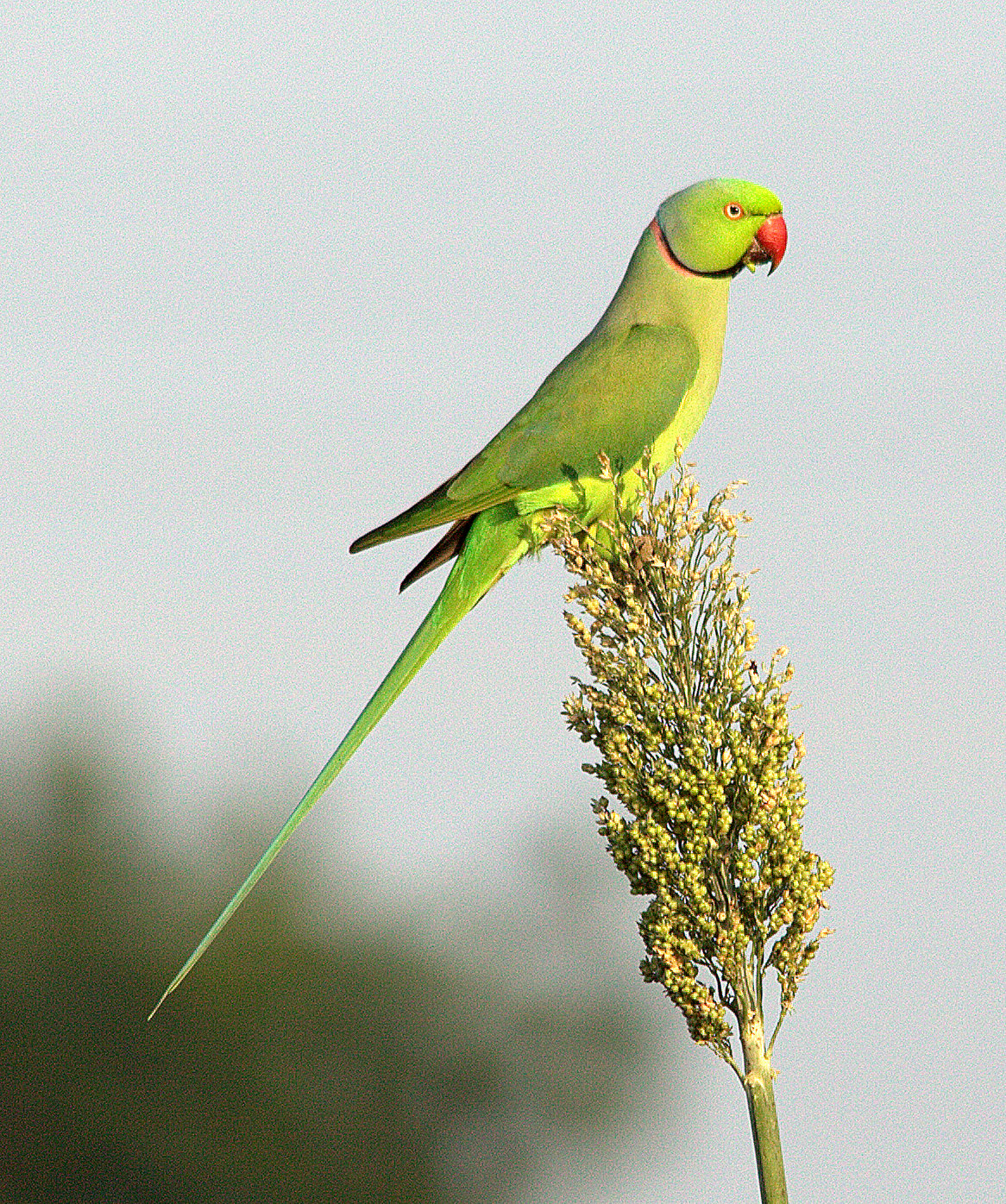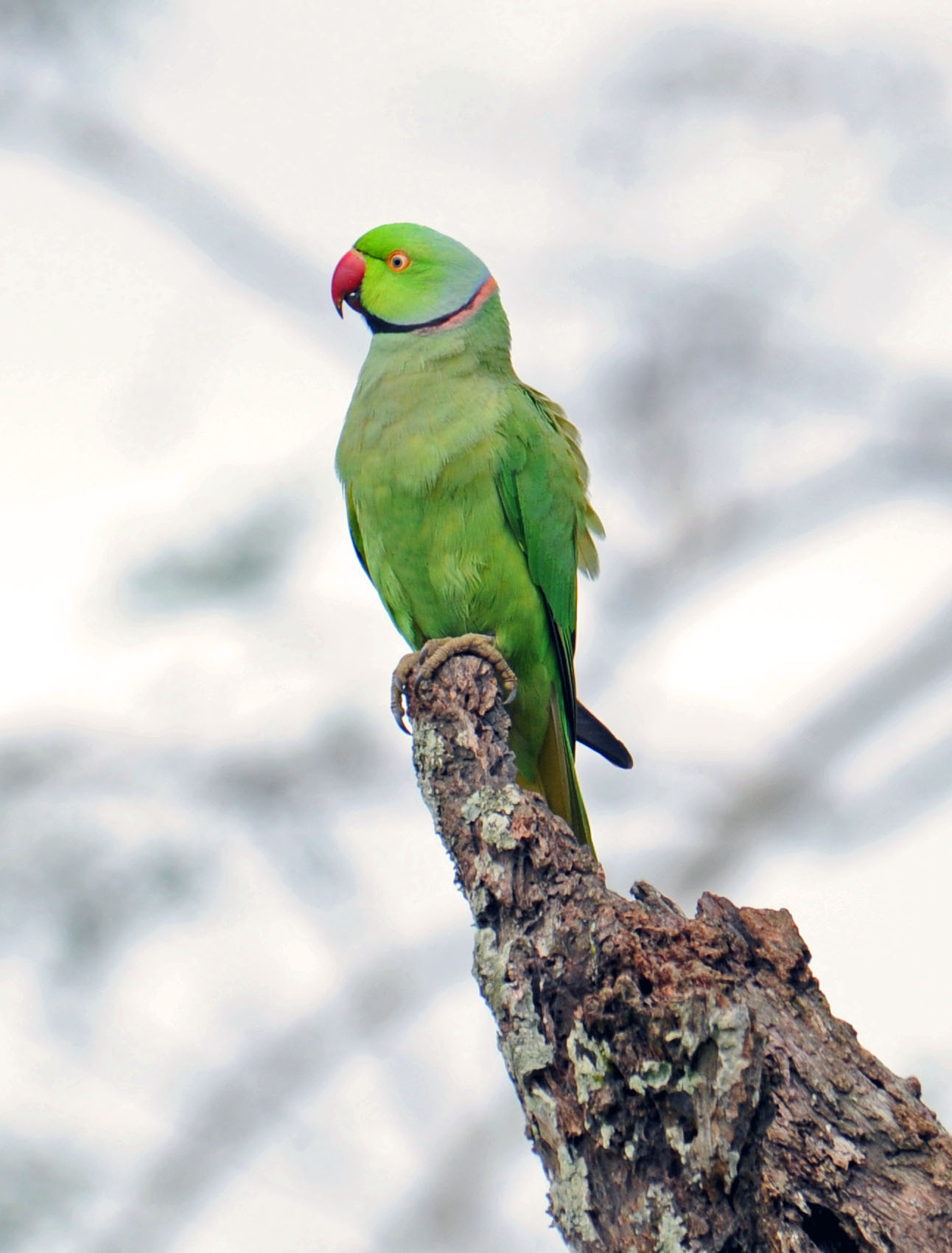
Psittacula krameri
SUBFAMILY
Psittacinae
TAXONOMY
Psittacus krameri Scopoli, 1769, Senegal. Four subspecies.
OTHER COMMON NAMES
English: Ring-necked parakeet, Indian ringneck parakeet;
French: Perruche а collier; German: Halsbandsittich; Spanish:
Cotorra de Kramer.
PHYSICAL CHARACTERISTICS
15.7 in (40 cm); 4.1–4.9 oz (116–139 g). Green plumage, red
bill, narrow red-and-black necklace, slender tail.
DISTRIBUTION
P. k. krameri: south Mauritania east to western Uganda and
southern Sudan. P. k. parvirostris: eastern Sudan, Eritrea, and
Ethiopia to northwest Somalia. P. k. borealis: northwest Pak-
istan and north India east to central Myanmar and southeast
China. P. k. manillensis: Sri Lanka and peninsular India. Feral
populations originating from escaped cagebirds established
elsewhere.
HABITAT
Lowlands and foothills. Deciduous woodland, secondary
growth, and wide variety of open, lightly timbered habitats, including
dry scrublands, semidesert savanna, and cultivated
farmlands or plantations in and around urban centers; avoids
interior of dense, evergreen forest, but present at margins; natural
and feral populations have successfully colonized manmade
habitats.
BEHAVIOR
Sedentary, but local movements influenced by rainfall. Usually
in small groups but very large flocks at concentrated food
sources and at nocturnal roosts; noisy, fearless, and highly conspicuous
because of constant screeching and squabbling; swift,
direct flight, with backward-swept wings and long, pointed tail
giving distinctive appearance.
FEEDING ECOLOGY AND DIET
Diet includes seeds, berries, fruits, blossoms, and nectar; fond
of cultivated fruits and grain, raiding both standing crops and
stockpiles at stores or railway sidings.
REPRODUCTIVE BIOLOGY
Monogamous. In West Africa breeding is from December to
April, and is from November to June in India and Sri Lanka.
Preceding copulation, elaborate display from male features
side-to-side swaying of upward stretching body, repeated raising
of one foot, and arching of neck while dilating eye pupils,
all to the accompaniment of low, twittering notes. Nest in tree
hollow, often in old holes of woodpeckers, or in cavities in
walls and under eaves of buildings; clutch of three to four eggs
incubated by female for 22 days; young birds leave nest at approximately
30 days.
CONSERVATION STATUS
Uncommon at extremities of range, but elsewhere plentiful and
increasing; benefits from agriculture.
SIGNIFICANCE TO HUMANS
Very destructive in croplands and orchards; popular cagebird,
with many color mutations established.
Photo Gallery of - Rose-ringed parakeet




 Animalia Life
Animalia Life